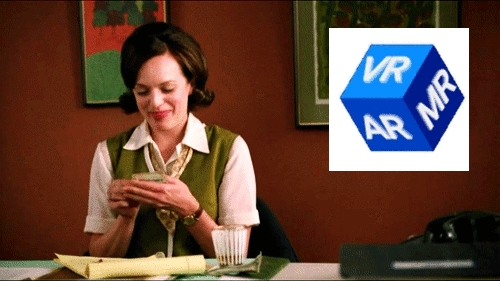Amazon (AMZN.Q) currently has about 1,000 employees in Vancouver, British Columbia.
The addition of Amazon’s new office and technology hub in the old Post Office downtown Vancouver will generate another 3,000 jobs by 2022 – bringing Amazon’s total Van. workforce to 4,000+.
“We don’t want to be someone who just takes,” stated Eric Gales director of Amazon Web Services (AWS) in Canada, in a Georgia Straight interview. “When we invest in cities like Vancouver, it has a positive broad effect on the ecosystem…including the investments that we make with community start-ups.”
That’s good news, because the vast majority of BC technology companies have 10 or fewer employees. In the last 5 years, there has been little growth in the number of tech companies with 50 or more employees.
It is a challenge for smart tech companies with a static labour pool to attract capital. And – in a mirror image of that conundrum – difficult to expand your workforce without capital.
In March, 2019 NRC-IRAP, Creative BC., Emily Carr University of Art + Design, Air Canada and BC Tech jointly sponsored a series of workshops entitled “Real Money in The Virtual World” – matching a curated group of VR/AR companies with the cheque-writers.
The workshops were held at The BC Tech Cube – 6,000 sq. ft. of shared studio space dedicated to building and growing Augmented Reality (AR), Virtual Reality (VR) and Mixed Reality (MR) companies, located in a Railtown heritage building.
The Cube presents workshops, events, programs, education, and investment opportunities custom-made for AR/VR/MR companies.
“A lot of the Small and Medium Sized businesses (SMEs) are having trouble getting access to capital,” confirmed Alan Goldman, of the AR/VR Cube Society, “It’s hard to grow without seed money.”
Let’s face it, VR head-sets are goofy, but anyone who has put one on – gets it.
This writer’s first VR interaction was at a Virtual Reality conference in Vancouver, participating in a demo that used VR to create data on buying habits.
Photo by world acclaimed Canadian photographer Mel D’Souza
It wasn’t difficult to see the utility of the technology. A toothpaste manufacturer could tweak the colour and design of the toothpaste package – in real time – until we picked that one.
It isn’t just pointy-headed 20-something VR CEOs that struggle to create an investor-friendly message.
At a recent VR panel discussion at the Hong Kong Film Market. Panelists included VR executives from Baobab Studios, DV Group, Atlas V, Flight School Studio and Digital Domain.
There was no talk of “locomotion”, “refresh-rates” or “stitching” – instead the VR bosses sounded like entertainment moguls from the 1930s.
“Modern audiences crave good stories” “Our job is to create lovable characters” “We help gifted story-tellers realise their vision” etc.
“We’re nearing the time when VR and its various spin-offs can and will be finally monetized,” stated Equity Guru principal Chris Parry, “We’re here, you just can’t see it yet.”
8 tech companies pitched at the Cube and were whittled down to a shortlist of three:
- VR Square – an enterprise solutions & 3D data consulting co. that helps drive business value using emerging technologies such as VR/AR, AI, machine learning, 3D printing, and robotics.
- Illusity – creating industry leading VR/AR solutions that will perform in multiple industries and deliver an informative, immersive experience.
- FTSY – a mobile phone app that captures images of feet to identify the shape and size of the foot.
Becoming a FTSY brand partner, means, “joining the FTSY online marketplace where shoppers browse and discover brands” and then “sending them to your web store to complete the purchase.”
Companies can also embed the FTSY on your web store for site-wide size recommendations based on your customers’ specific foot shape, increasing conversion rates, decreasing returns and boosting loyalty.
The “FTSY for Brands Shopify app” takes the guesswork out of sizing, so customers can ‘add to cart’ with confidence knowing your shoes will fit as great as they look!
“The local SME’s have got some great ideas but they are growing slowly,” confirmed Goldman, “Because they tend to be ‘content-plays’. Potentially successful companies like FTSY have more than just a customer base. That’s critical for their growth. Because if I’m an investor, I’m asking myself, ‘How can I scale this?’”.
The arrival of Amazon’s HQ2 in downtown Vancouver may have a positive impact on SMEs, but the in the meantime it’s vital the BC Tech and other local organisations bridge the gap between the tech innovators and the capital markets.
IDC Research predicts that the virtual and augmented reality will grow from just over $9 billion in 2017 to $215 billion by 2021.



thks for the hint, where are the stock listed start up companies we can invest in 🙂
Wilddieb (or “Poacher” – from its German roots), fair question. Short answer, we are tracking this space, looking for publicly traded VR/AR investment opportunities…but….it seems that we are too early. As the article outlined, it’s easy to the see the beauty and the flexibility of the technology, but making a case for an investment is harder. I’m not a gamer – so take this with a grain of salt, but I believe the need for a HEADSET (not sexy) is the biggest single obstacle to large scale adoption of VR technology. When they can inject it into your eye-balls it’s game on. I could just tell the VR I feel like living in Costa Rica this morning – and have my underground parkade cluttered with palm trees and spider monkeys.
Poacher is good haha, thks for your nice response, I will follow you guys (since a long time). P.S. next purchase is an Oculus Quest, I love this technical gadgets